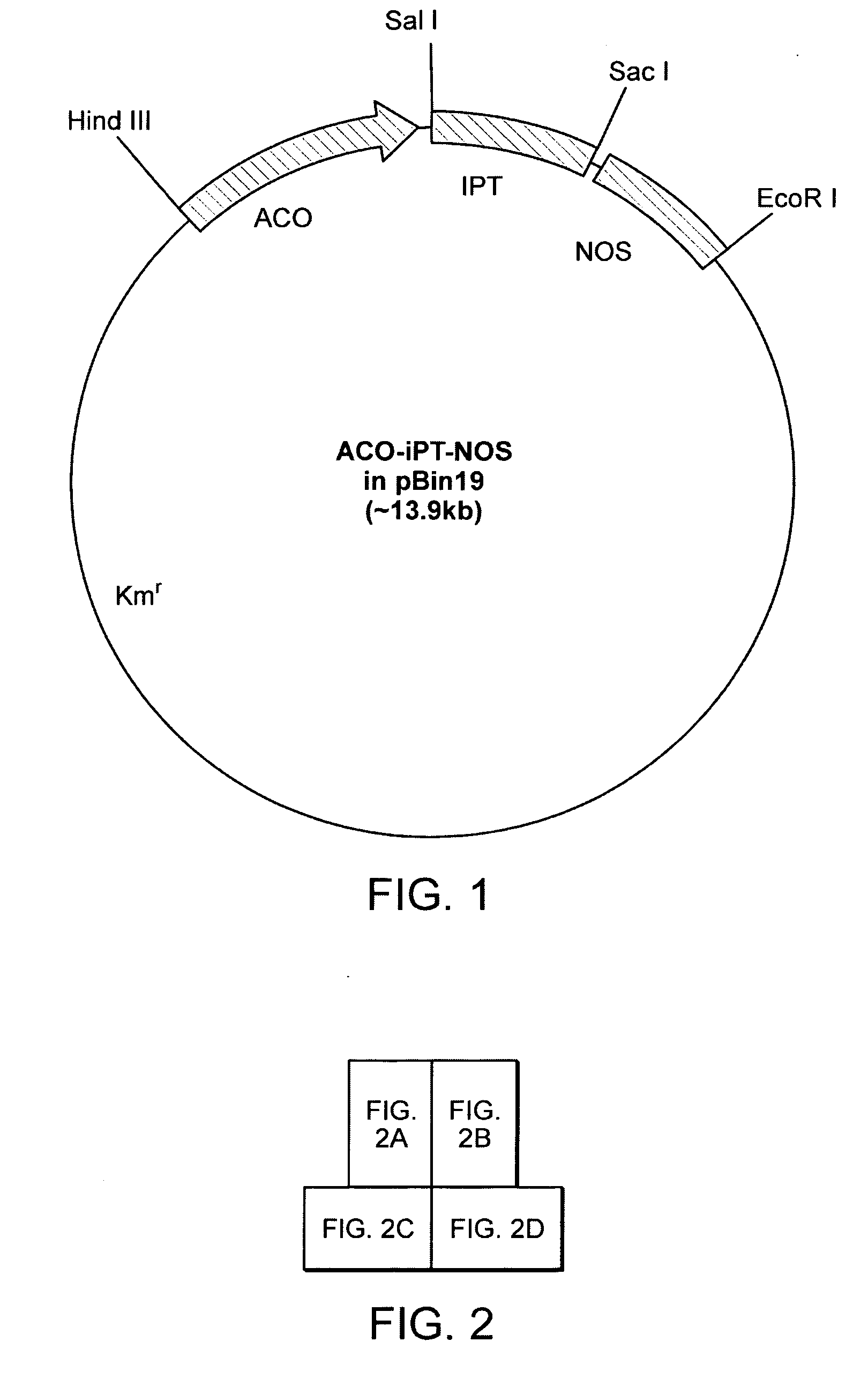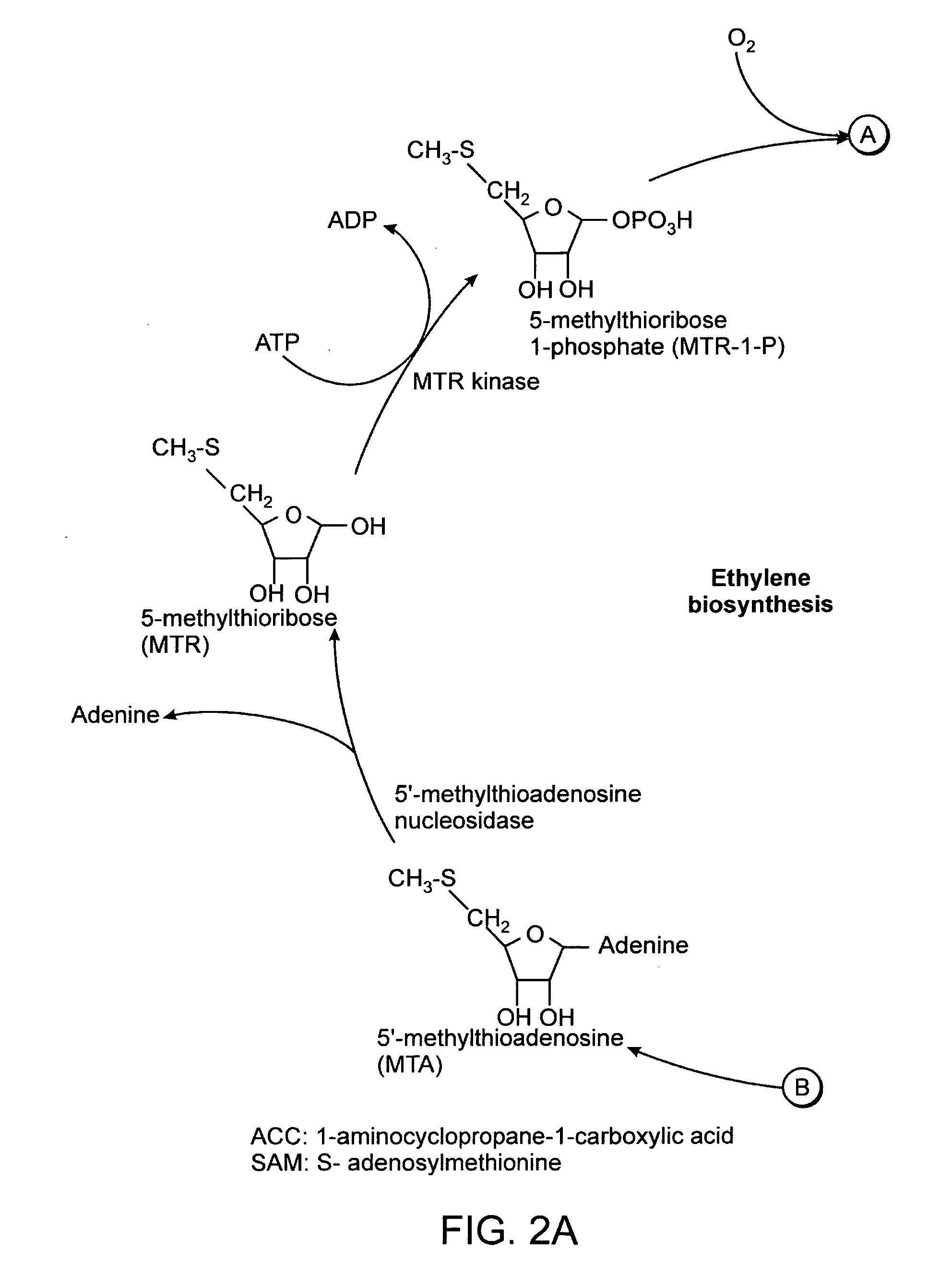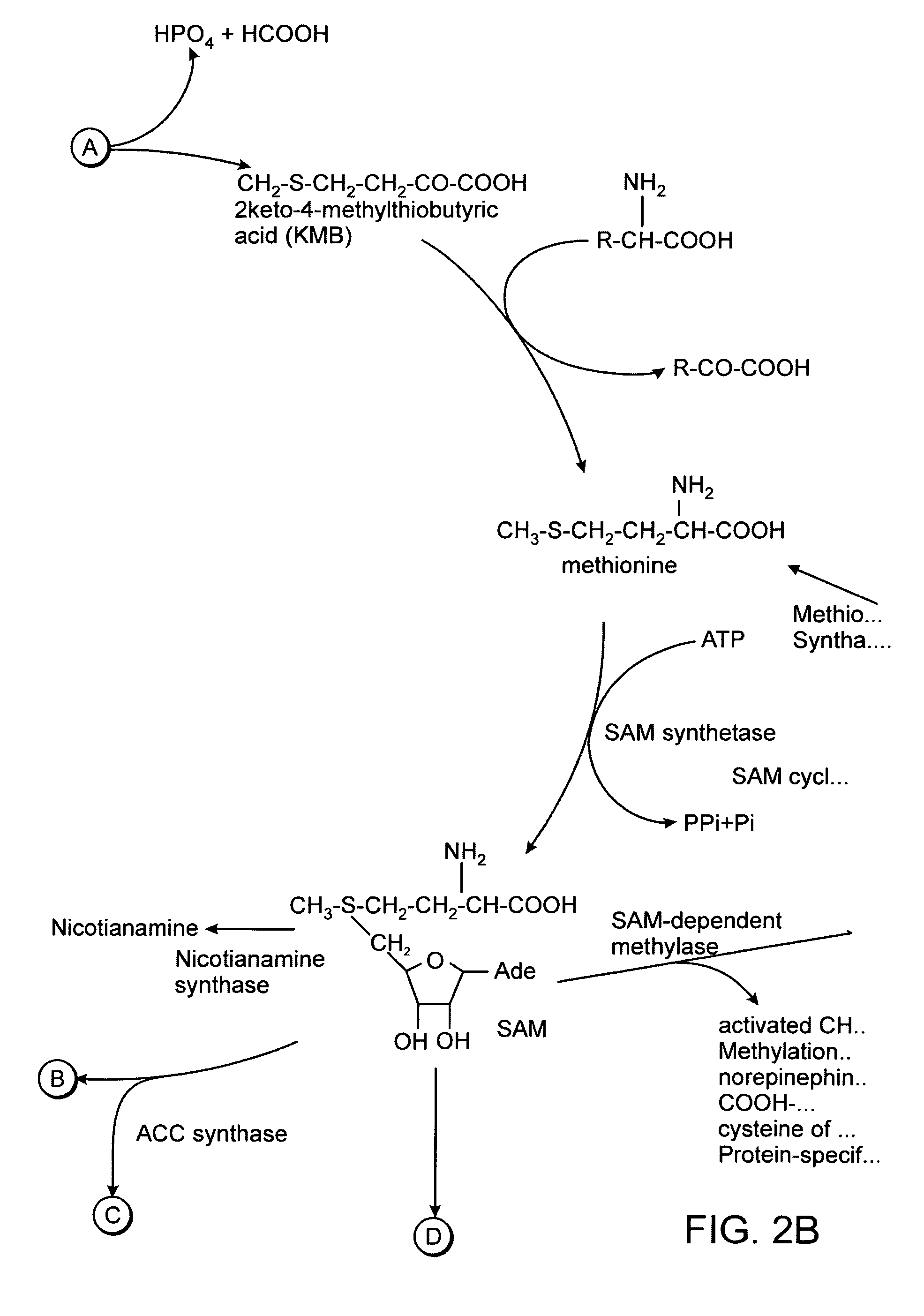Method and composition for increasing branching and flowering response in plants
a branching response and flowering technology, applied in the field of methods and compositions for increasing branching and flowering response in plants, can solve the problems of limited effect of exogenous spray application, limited movement of cytokinins within the plant, and most of the resulting ipt transgenic plants exhibit morphological abnormalities, so as to increase the branching in the vegetative shoot, increase the bud count, and high desirable phenotypes
- Summary
- Abstract
- Description
- Claims
- Application Information
AI Technical Summary
Benefits of technology
Problems solved by technology
Method used
Image
Examples
example 2
[0132] Transformation of petunia and chrysanthemum. Leaves of young (1 month old) petunia (cv. Marco Polo Odyssey) were sterilized with 10% Clorox for 15-20 min. and then rinsed 5-times with sterile water. The young, soft stems of chrysanthemum plants (cv. Iridon) were washed for 60 sec with 70% ethanol, rinsed 3-times with sterile water, and then sterilized in 5% Clorox for 8 min. before finally rinsing 5-times with sterile water. The bacterial suspension was cultured in LB medium supplemented with 50 mg / L kanamycin and 25 mg / L rifampicin. The suspension was incubated at 25° C. on a rotary shaker (220 rpm) until achieving an optical density of 0.4-0.7 (λ600 nm). The suspension was then centrifuged and the pellet re-suspended in a fresh liquid MS medium.
[0133] Leaf explants of petunia or stem segments of chrysanthemum were soaked in the infection medium for 5 min., blotted dry and kept 3 days in the dark at 22-25° C. on plates with MS medium containing 2 mg / L of N6-benzyladenine (B...
example 1
[0134] Protocol for Poinsettia Transformation. Poinsettia explants were transformed using Agrobacterium-mediated transformation method. Young poinsettia stems were harvested from the greenhouse, the leaves removed and the stems surface-sterilized in 5% chlorox solution by lightly brushing the stem surface for six minutes. Stem internode sections are then cut into segments 0.3-0.5 cm long and then cut again longitudinally (FIG. 4b). The section are plated on MS medium (with N&N vitamins and 0.1 mg / l TDZ) for a 5-day preculture period. After preculture explants are individually dipped into a broth of Agrobacterium tumefaciens LBA 4404 bearing the LEACO10.821 kb-ipt construct or LEACO10.821 kb-gus construct for 0.5 sec and then immediately blotted dry on sterile paper. The Agrobacterium inoculated explants are co-cultured for 2-4 days, and then plated onto selection medium [MS medium (Murashige and Skoog, 1962) supplemented with 0.1 mg / l TDZ and N&N vitamins] containing kanamycin and t...
example 3
[0139] Stability of tobacco transformants. The stability of the transgene in the first (T1) and second (T2) seed-generations of tobacco was assessed. Results are shown in Table 3 for the T1-generation & in FIG. 11 for the T2-generation. Basically, the phenotype observed in the primary transformant was also observed in the seed generations.
[0140] T1 generation LEACO10.821 kb-ipt tobacco lines displayed growth habits that could be separated into one of two distinct phenotypic groups. One transgenic line from each group was selected to characterize these two basic phenotypes (Table 3). One phenotype, typified by LEACO10.821 kb-ipt lines N2 and N8, appeared similar to the wild type in overall stature and branching habit but produced a greater number of flower buds (Table 3 and FIG. 13).
[0141] The tobacco phenotype, typified by LEACO10.821 kb-ipt lines N1 and N4, displayed a more compact branching habit with fewer flower buds than either the wild type line or the transgenic lines (N2 a...
PUM
| Property | Measurement | Unit |
|---|---|---|
| volume | aaaaa | aaaaa |
| volume | aaaaa | aaaaa |
| nucleic acid | aaaaa | aaaaa |
Abstract
Description
Claims
Application Information
 Login to View More
Login to View More - R&D
- Intellectual Property
- Life Sciences
- Materials
- Tech Scout
- Unparalleled Data Quality
- Higher Quality Content
- 60% Fewer Hallucinations
Browse by: Latest US Patents, China's latest patents, Technical Efficacy Thesaurus, Application Domain, Technology Topic, Popular Technical Reports.
© 2025 PatSnap. All rights reserved.Legal|Privacy policy|Modern Slavery Act Transparency Statement|Sitemap|About US| Contact US: help@patsnap.com



